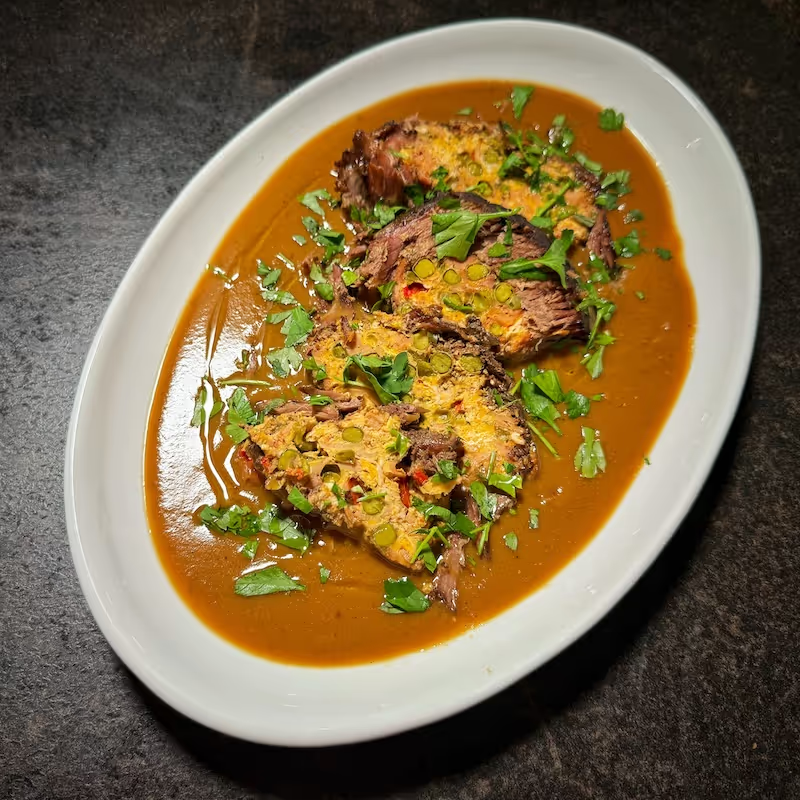Grilled Polenta Stew with Argentine Roots, Sicilian Flavors, Romanian Heart
Grilled polenta stew with Argentine roots, Sicilian flavors & Romanian heart. A modern twist on a 19th-century recipe with cheese, egg & rich tomato sauce.
Servings
Prep Time
Cook Time
Ingredients
Total Time
Ingredients
Ingredients (for 2 servings)
Polenta
- 120 g instant cornmeal
- 500 ml milk
- 2 tsp sugar
- ½ tsp chili flakes
- 1 tsp salt
- 1 tbsp butter or olive oil, plus extra oil for frying
- 2 slices provolone (0.5–1 cm thick)
Tomato–raisin–olive sauce
- 500 g fresh tomatoes
- 1 tbsp olive oil
- 1 small onion, finely chopped
- 1 garlic clove, chopped
- 20 g raisins
- ½ tsp ground cumin
- 2 eggs
- 1 tbsp chopped parsley
- 6–8 green or black olives (whole)
- Salt & pepper
Topping
- 2 fried eggs (with crispy edges if you like)
- 2 slices provolone (0.5–1 cm thick)
- Fresh parsley, fresh pepper, chili flakes (optional)
Equipment
Instructions
It's time to take another old recipe and adapt it to our modern needs and ways of cooking. This time I chose an Argentinean recipe from a book I found in Buenos Aires called La Cocinera Argentina – Un recetario del siglo XIX de enigmática autoría by Marcela Fugardo and Paula Caldo.
I decided to reinterpret a dish called "Guiso de Polenta," which translates into polenta stew, by gently deconstructing it into a more visually refined plate.
As with every historical recipe I work with, I aimed to preserve its soul while adapting it just enough to suit how we eat today. So here is what I did:
Instructions
- Prepare the Polenta: In a pot, pour the milk. Combine it with sugar, salt, chili flakes, and butter, and bring to a boil.
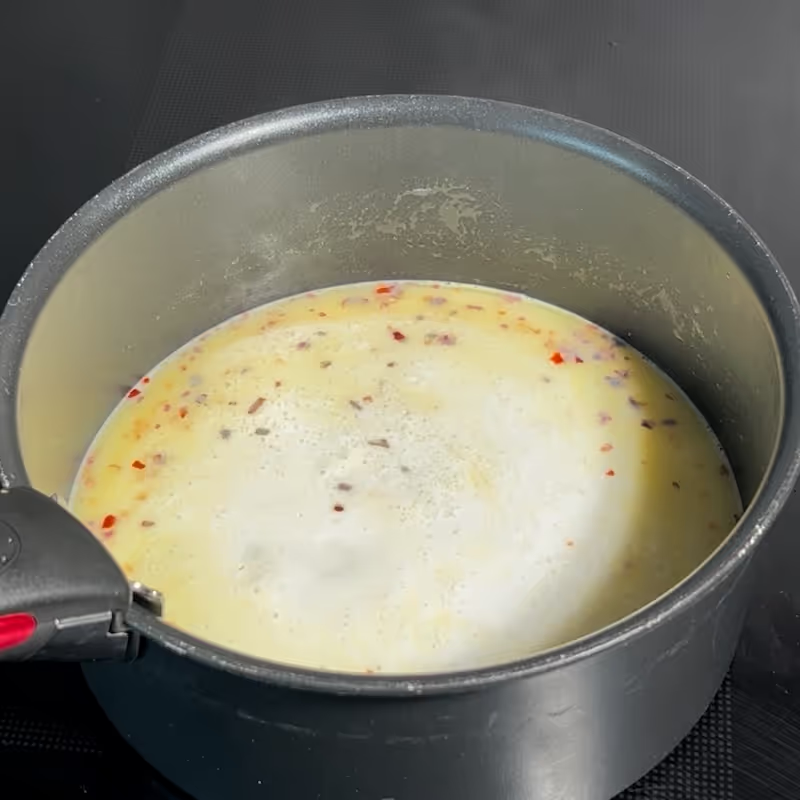
- Gradually whisk in the instant polenta.
- Simmer for 3-5 minutes over low heat until thickened.
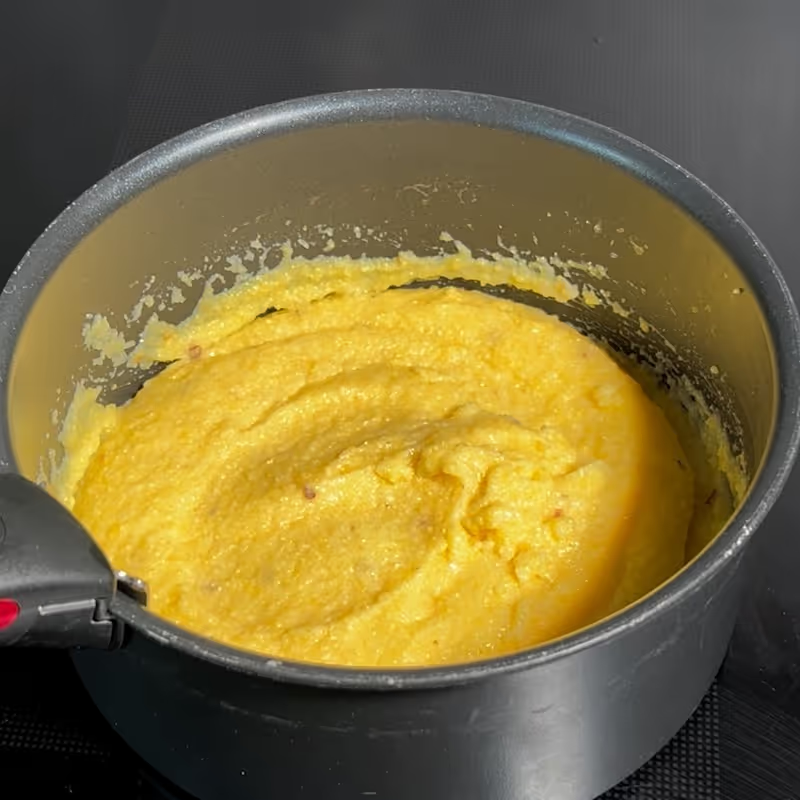
- Pour into an oiled tray or two individual molds in a 1.5–2 cm layer.
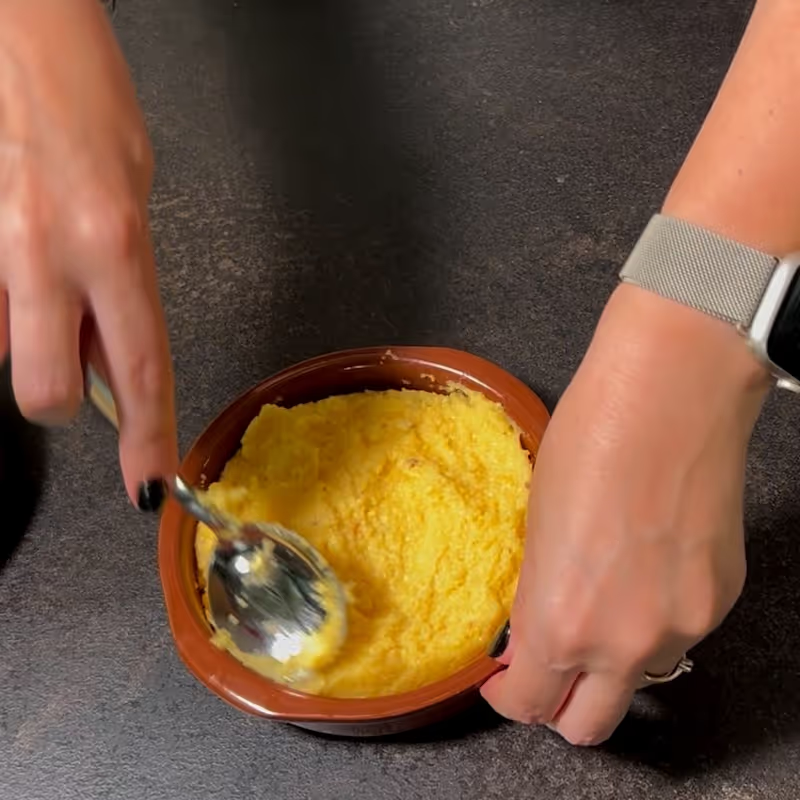
- Cool completely and refrigerate for 1–2 hours until firm.
- Peel and Chop the Tomatoes: Blanch tomatoes for 30–40 seconds in boiling water.
- Transfer to ice water, peel, and dice.
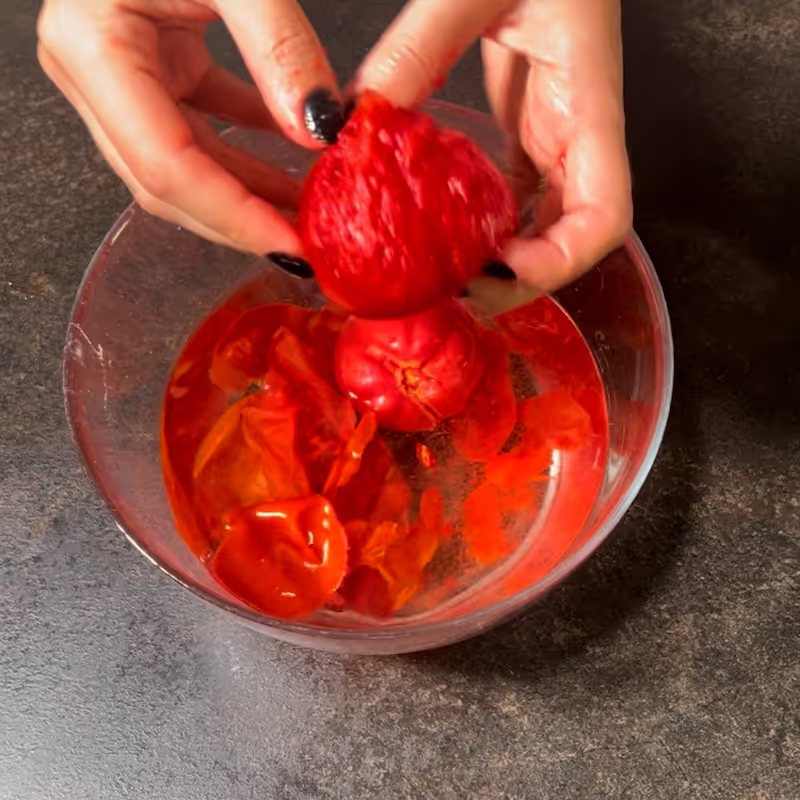
- Make the Sauce: Sauté onion in olive oil until translucent. Add garlic, chopped tomatoes, raisins, cumin, salt, and pepper.
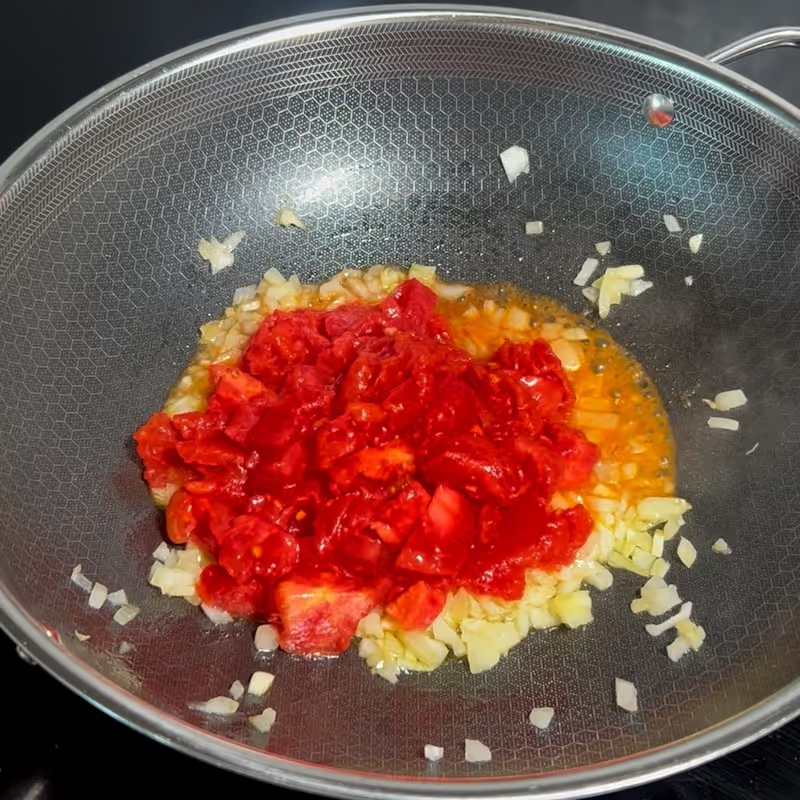
- Stir in olives and simmer for 10–12 minutes until thick.

- Slowly drizzle in the beaten eggs while stirring to form fine ribbons. Adjust seasoning.
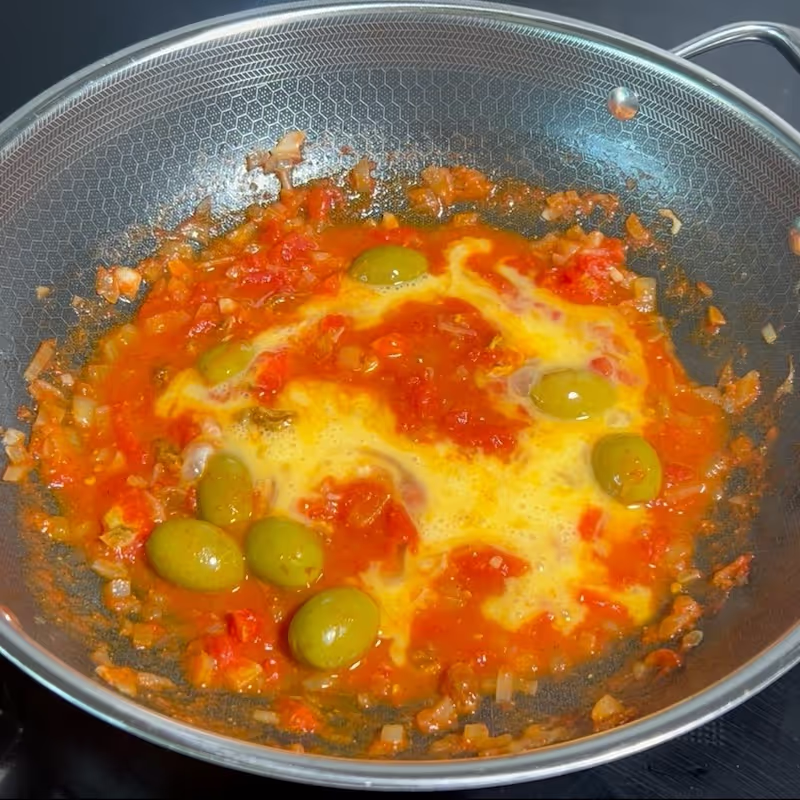
- Fry the Polenta: Slice the chilled polenta into squares or rounds. Grill it with a bit of olive oil for 3–4 minutes on each side.
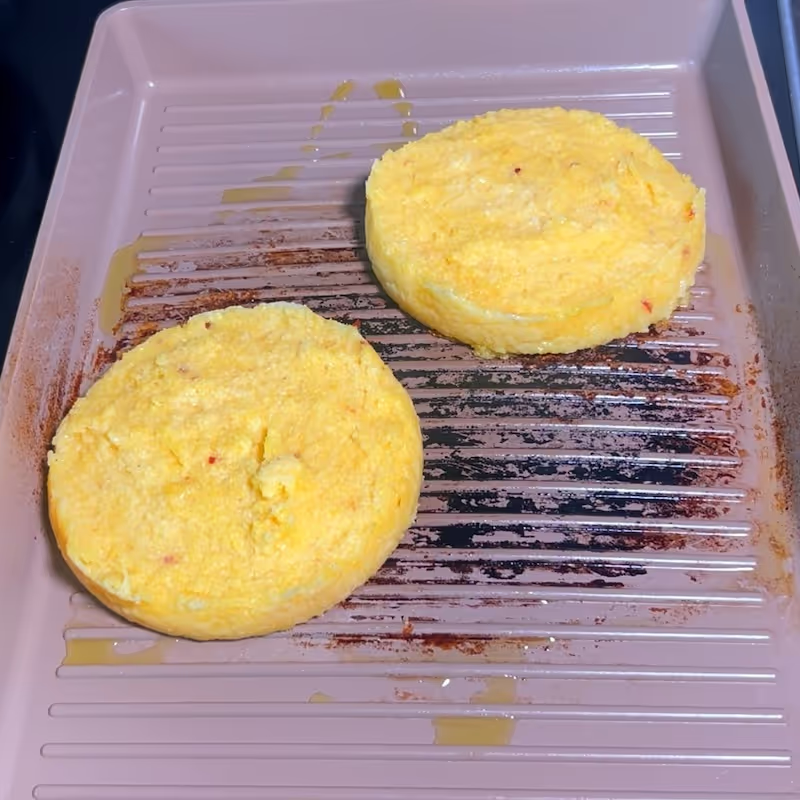
- Plate over a generous spoonful of the tomato sauce.
- Melt the Provolone: Grill cheese slices directly on a hot pan without oil for 30–60 seconds until softened with grill marks.
- Place immediately on top of the fried polenta.
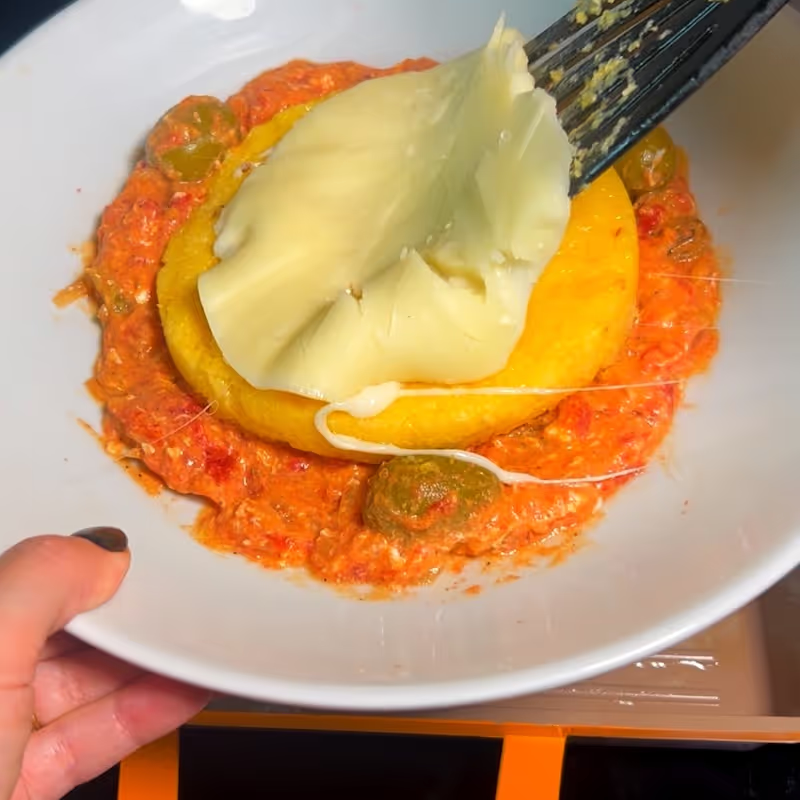
- Fry the Eggs: Cook sunny-side-up eggs in a nonstick pan with a touch of oil. If desired, use molds for crisp edges.

- Final Assembly: Spoon 2–3 tbsp of tomato sauce in the center of each plate.
- Place a slice of fried polenta topped with melted provolone.
- Add a fried egg on top.
- Garnish with parsley and optional chili flakes or freshly cracked pepper.
Original Version
Now that you have seen my interpretation, I will leave you the original recipe so you can maybe try both or at least see the point of reference I had:
White polenta with sugar, chili, and salt, cooked in good fat. Make a sauté with onion and canned tomato, garlic, raisins, two beaten eggs, a bit of ground cumin; once boiling, add chopped parsley and thin slices of olive. Serve in a dish.
A Sicilian Touch in the Pampas: Why I Reimagined the Original Recipe
When I first read the original polenta recipe — a soft cornmeal base topped with a sweet-savory tomato-raisin-egg sauce — I was immediately reminded of Sicilian cooking.
The combination of cumin, raisins, garlic, and tomato echoes many Sicilian dishes that layer bright, bold flavors over humble ingredients.
And truth be told, this isn't accidental. As a matter of fact, Italian immigration, especially from southern Italy and Sicily, shaped much of Argentine cuisine.
You can taste it in the sauces, see it in the pizza traditions, and even find it in the habit of topping dishes with fried eggs.
Furthermore, Sicilian food, in particular, is known for pairing sweet and savory elements and serving rich sauces over fried or grilled bases—from eggplant to bread to chickpea panelle.
So, inspired by that, I decided to deconstruct the original dish. Instead of mixing everything together like a stew, I chose to separate and layer each element.
This not only allowed me to highlight textures and contrasts (the creamy polenta, the rich sauce, the gooey cheese, the runny egg), but it also let the grilled polenta shine as a base.
On a different note, being Romanian, polenta (or mămăligă) is deeply rooted in my food identity. Therefore, making it the central element felt meaningful and right.
I also decided to top the polenta with melted provolone — a cheese widely used in Argentina and originally from southern Italy. I added it because I loved eating it in Argentina and because I truly believe that its sharp, melty, slightly smoky flavor pairs beautifully with the sweetness of the raisins and acidity of the tomatoes, creating the kind of balance I was aiming for. And since it's also commonly grilled in Argentine cuisine (provoleta is a classic), it felt like a natural choice for this fusion.
Finally, I added a fried egg on top—a small tribute to Argentina itself, where, during our travels, many dishes we ordered came topped with an egg, much to our surprise and joy.
History & Origins
With everything on the table, I think it's time to examine the history behind this dish's centric component - the polenta.
You may not know this, but polenta dates back to ancient Rome, when it was made from farro or millet. After maize was introduced to Europe, it became a staple in northern Italy and spread throughout the old continent.
It arrived in Argentina through massive Italian immigration in the late 19th century, where it became beloved in working-class households.
La Cocinera Argentina (1881), the cookbook from which I took the recipe, is considered the first published Argentine cookbook. Written by the mysterious "V.P. de P.", now believed to be Virginia Pueyrredón de Pelliza, it offers insight into 19th-century domestic life and culinary habits, blending indigenous and immigrant influences.
And the recipe I adapted shows how cooking polenta was already embedded in Argentine kitchens by that time, flavored with both local produce and European spices.
FAQs About Polenta
If you're new to polenta or just curious, here are some helpful answers:
Q: Is polenta healthy?
A: Yes. When cooked with water or milk and minimal fat, polenta is naturally gluten-free, low in fat, and a good source of fiber and complex carbs.
Q: What is polenta?
A: Polenta is a dish made by boiling cornmeal until it becomes a soft, porridge-like base. It can be served creamy, chilled and sliced, or fried.
Q: What is polenta made of?
A: Polenta is made from coarsely ground yellow or white cornmeal.
Q: Polenta vs. grits
A: While both are made from corn, polenta is typically yellow and coarser, while grits are usually white and finer in texture. Grits are more common in Southern U.S. cuisine.
Q: Can polenta be frozen?
A: Yes! Once firm, sliced polenta freezes well. Just thaw and fry or grill later. Great for making fried polenta or grilled polenta ahead of time.
Conclusion
I hope this reimagined dish inspires you to look at traditional recipes in a new way.
It honors the past while tasting fully modern. With roots in 19th-century Argentina, flavors from Sicily, and heart from Romania, this might just be the best polenta recipe to add to your list.
The full video for this recipe is available below and on our YouTube channel. Don't forget to like and subscribe for more!


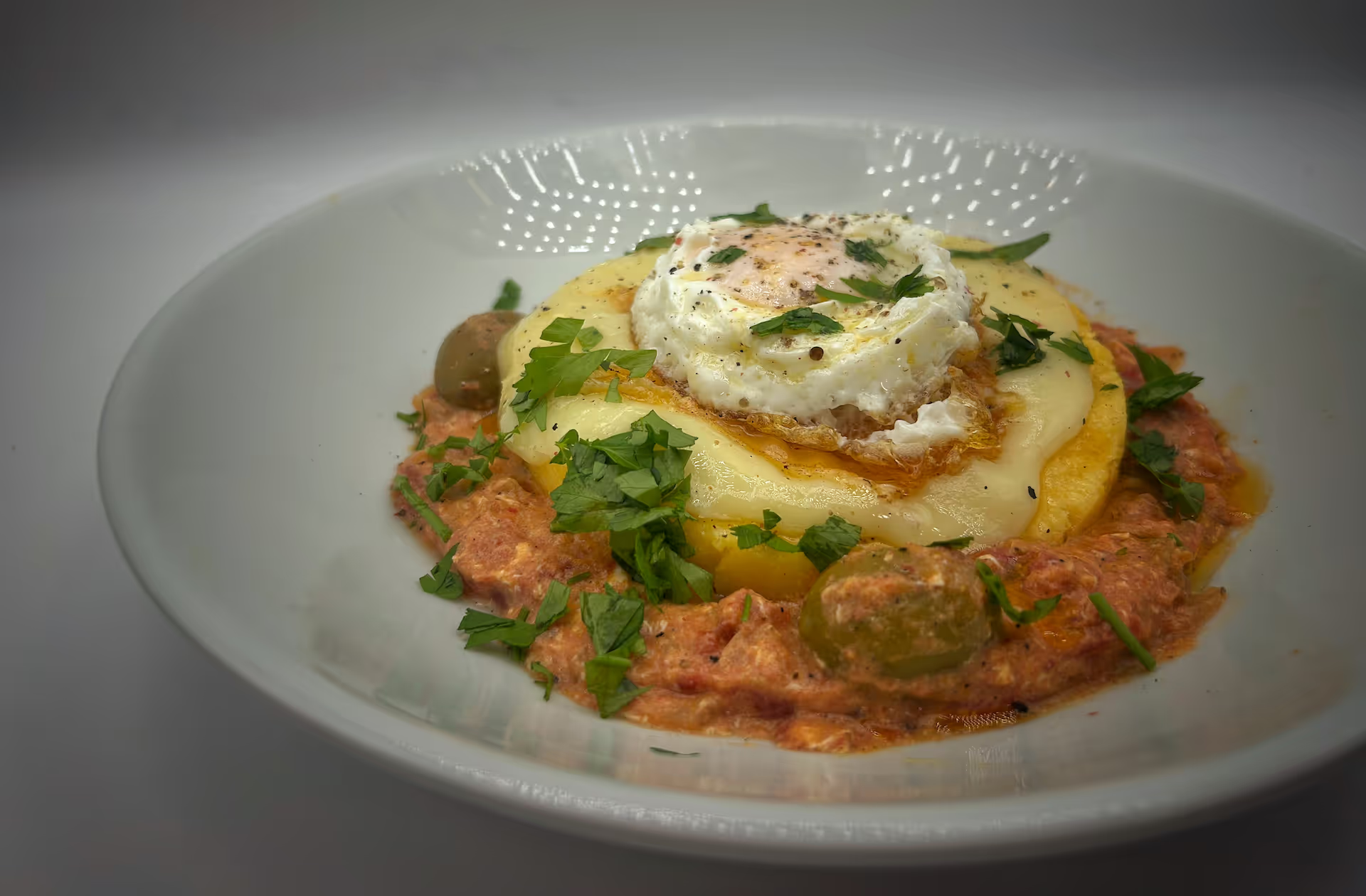

.svg)




